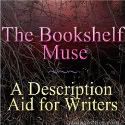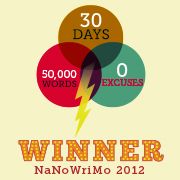Welcome to my weekly series, Designing from Bones, where we use archaeology, mythology and the artifacts of human history to find and design stories. Join me today as we take a field trip to the Greek Theater and view the ancient legacy it holds.
Life is a stage, and we, dear friends, but actors gliding across its surface. Follow me through the misty portal as we visit the birthplace of modern entertainment in all its forms, Classical Greece.
Theater: The Roots of Drama
Going to the theater in Ancient Greece was a major social and religious affair. Each year, during celebrations to honor Dionysus (the god of wine and fertility) three playwrights would compete on successive days. Each would present a trilogy of tragedies with an attached comic relief segment known as a Satyr play (rowdy burlesque) that was performed either after the finale or between the second and third act. If this sounds familiar it is because this is the foundation design that later transformed into the three-act structure.
The plays were performed in amphitheaters built into the sides of hills around a circular central area with a painted man-made wall acting as a backdrop. Plays were performed by a leader (actor; choregos) backed by a chorus of 12-50 members. The play was chanted with the chorus adding volume and emphasis through both their voice and the use of masks that portrayed the emotion of the choregos. Rather then the raised stage we are familiar with the chorus was at the lowest point of the theater and often wore high-soled boots to add height (some time before the invention of the disco shoe with gold fish in the heel).
The tragedian Aeschylus added a second actor and later still Sophocles added a third. The addition of these actors allowed for deeper interaction between the primary characters of the play and slowly reduced the role of the chorus.
Fun fact: The area the chorus performed in was referred to as the Orchestra and eventually transformed into the orchestral pit. Imagine a movie without music. The ancient chorus is still an integral component of live theatrical productions of all forms.
The ancient theater is the root of what we do as writers and there is much we can learn from studying the various aspects of it. In our quest to properly balance all of the aspects of good theater in the drama’s (i.e. stories) that we create: Have we placed the right actor (or actors; point-of-view) into a compelling story that will hold and thrill the audience? Is the chorus (featured and bit players) too loud, too soft, adding emphasis and meaning to key aspects of the story? Are the characters emotions visible to the guy who just picked a random page to read? Is the stage set with the resources the players will need? Is the backdrop/setting relevant to the scene? Does the message of the story resonate throughout its length so that it will echo on long after the final page?
The key to a great drama, then as now, rests in how well the writer is able to utilize all of the available components: actors, chorus, emotion-bearing masks, costume and props, backdrop and acoustics (resonance).
Dionysus and the Dithyramb
Dramatic acting (and in the long run, fiction writing) began with the dithyramb. The dithyramb is a hymn sung and danced in honor of Dionysus. A special type of poetry where the poet was the sole speaker. These poems tended to be ecstatic, wild and full of over-wrought excitement, much like the tales of a modern drunk spoken to a date they are trying to impress, (a date who later will laugh to her friends about her experience as she throws the drunks number away).
The point being: The drunk is memorable for the intensity of his story.
The dithyramb, according to Aristotle, formed the basis of Athenian tragedy where the audience derived pleasure from the human suffering of the characters portrayed. Acts of folly. Acts of ignorance. Acts of indulgence. Presented in an over-blown manner allowing the crowd to foresee the tragedy awaiting the central character and remain unable to stop them from their folly. Tragic.
Are we providing sufficient tension to keep the reader on the edge or their seat? Are we giving them a clear vision of our characters actions so that they both understand and are thrilled by the suffering we put our characters through? When the story is over and the book closed, what is it that we want the reader to remember and take with them?
The Rise of Comedy
Comedy, in Ancient Greece, is not what we would expect from a Will Farrell movie, rather it refers to a progression of steps leading away from the dithyramb-style tragedy.
At first, Greek comedy (Archaia: Old Comedy) focused on satirical tirades against political figures with large doses of sexual innuendo. At its core, this form of comedy amounted to direct political attack disguised as foolery.
Over time, Archaia gave way to Mese (Middle Comedy) which introduced archetypical supporting characters that were easy for the crowd to recognize. Soldier. Baker. Candlestick maker. The introduction of these stereotypical archetypes allowed a more realistic form of buffoonery, with the support characters functioning as foils against which the leads could play their comedy.
Mese gave way to Nea (New Comedy) which offered the audience a respite from the harsh realities of their day while portraying an accurate but less than fully detailed view of life. It was to the greatest of the New Comedians, Menander, that an critic once asked, “Is it life that influences your writing or is it you that influences life?” New Comedy plays focused on the fears, follies, mishaps and relationships of every day people. It is easy to see how this transitioned into modern writing.
From a writers standpoint, each form of Comedy has something to offer.
 While it may not be the best idea to mock a leader, buffoonery used by a character to disguise an attack against another is a powerful dramatic tool. This is especially true when the attacking character is in a weaker position then the one attacked.
While it may not be the best idea to mock a leader, buffoonery used by a character to disguise an attack against another is a powerful dramatic tool. This is especially true when the attacking character is in a weaker position then the one attacked.
Not every character can be fleshed out, especially in an epic piece that may contain a hundred or more players. The use of archetypes is entirely acceptable although we should use caution to avoid old stereotypes in favor of creative new approaches. How about an elite soldier that openly loves to perform ballet?
The “ordinary guy/gal” is what most of our readers are. By using characters that are ordinary people we allow the reader to slip into the story and vicariously experience the joys, sorrows, loves and lives of our characters. Take your readers on a ride. Thrill them. Excite them. Hand them a powerful emotional experience and they’ll be begging you for more. Guaranteed.
And now, friends, I return you through the misty portal to your own time and place. I hope that you’ve enjoyed our trip to the theater.
Join me next week when we take a hike on one of the grandest paths in history.
If you’re interested in more great information and ideas on writing, check out my previous Designing from Bones entries found in “Categories” on the side bar.
Peaceful Journeys!













“satirical tirades against political figures with large doses of sexual innuendo” – Sounds like a Will Farrell comedy to me. 😉
GREAT post as always.
Actually, yeah it does *snicker* but let me say this: The ancients were far more brutal in their humor than most of us are now. To the point where comedians would be attacked on stage while performing. Hey! Great ad-lib knife fight scene 🙂
Let’s try again. Great post. It is pretty amazing that the basic story structure from thousands of years ago is still solid. Thanks for the post.
I love this post. I facilitate a classical literature club for kids 7-17. We divide history into four sections. This year we’re back in Ancient Times so your information fits with our study. Our family also participates in small local theatre plays sometimes. I think play writes are terrific.
Thanks for this post.
I just sent the link to the families in my literature club.
Kerry: Like the wheel, trying to reinvent writing is probably not the best idea. Innovations came one creative mind at a time, were tested and passed into obscurity or were added into the volume of writing knowledge and lore. It always fascinates me how much of the “root” remains in our “modern” systems. Thanks for the great comment, ROWbro!
Ali: A classical literature club for kids, now that is awesome! If you or any of those in Ali’s club have a subject you’d like to see me cover in the future feel free to leave it in the comments and I’ll see if I can accommodate the request. Also, if you have any suggestions for me I’d love to hear them. A few friends have encouraged me to turn these posts into an educational tool for students 7-17 so I’d love your input. Enjoy the post 🙂
That trip to the theater gave me lots to think about, Gene. Thanks.
Oooh what a blast from the past. I took some theater classes in college and studied this in a few english courses as well. I feel like I should dig out my old underlined copies of Shakespeare and Candide and Lysistrata. I had one awesome english teacher who had us perform our own scenes and plays both in the classroom and outside. Fun learning process, and you’ve advised, a writing one. Nice research, Gene.
Great post, Gene. One more lesson that nothing we do is really new, we may just have a different take on it. I knew it all started with the Greeks but wasn’t aware of the different types of comedies and how it all progressed. Thanks for doing the research!
Wow, not only is this a great post for writers, but a good history lesson, too. I learned a lot from this post. Right now I’m reading James Scott Bell’s “Plot & Structure” and he stresses the use of the three-act structure. Fascinating history. Thanks, Gene!
Gene, this is so perfect! I have just revised my first stage play and am working on setting up a public reading for next year. Thanks so much for putting all of this together. It’s a great resource. Also, ethnically, I am about a quarter Greek so you’re linking me back to my peeps.
Pat: Thanks 🙂
Jess: You had a great English teacher. One of mine had us do MacBeth. I started as MacBeth and ended as McDuff (who kills MacBeth) which taught me a great deal about irony. I’d definitely pull out the plays and re-read them. Exploring the roots of everything we do is a great way to improve, well, everything 🙂
Marcia: True, nothing is really new, except us and our unique view of things. Glad you enjoyed the post 🙂
Lynn: James Scott Bell is excellent, I have that book on a special shelf next to my desk where I keep all the craft books I use while plotting/writing. Personally, I use the 4-Act structure (Larry Brooks and most screenplays) but that differs only in that the traditional Act 2 is split in half divided by the Midpoint milestone.
Rachel: A quarter Greek, that is very cool. You must feel the theater vibrating in your bones and with a play moving ahead nicely you’ll soon be joining your ancestors in the great theater. Very exciting 🙂
What interests me about archetypes: most of us use them without knowing it. A good study (for me) of archetypes was to study character actors.
Paul Gleason is a good modern example. He plays tough guys and white collar sleezeballs–and he does it well. When I started to understand what archetype of character played, I gained a better understanding of the archetype and how to use it in my fiction. The trick is not to be obvious. Readers don’t like to be treated like they’re stupid. 😀
Great post as usual. I’m sorry I didn’t visit yesterday. My wordpress subscriptions are wonky. Everyone’s posts are not showing. 😦
Pingback: Fantastical Friday: Terra Nova, Zombie Apocalypse, and Captain Kirk vs. Columbus! | Shéa MacLeod, Author – Everything's Better With Dragons
Pingback: Can We Have A Little More Cowbell Over Here? | Jenny Hansen's Blog
I love these…it’s like getting to travel and experience a cool aspect of writing all at the same time. 🙂
Angela @ The Bookshelf Muse
Wow Gene, your blog posts are like The Times newspaper to my comic strip lol. Great post. I can’t imagine singing my poems but maybe I should 🙂 I’ve been to a famous circular theatre in London (wish I could remember the name) where lots of famous plays were put on a very long time ago. Fascinating stuff!
Love this post, Gene! Great tie-ins for modern writers… We can learn so much from the ‘ancients!’ 😉
Angela: Excellent, the travel exploration concept is exactly what I’m going for with this series 🙂
Catherine: Poems have pentameter which leads to rhythm and music. The Psalms in the bible are poetic songs, as are lyrics for all vocal music. It would be interesting to have a poet that wrote not just for powerful content but also powerful sound.
August: In our busy “modern” live it is easy to overlook the fact that everything we have, enjoy and utilize has some root in distant past. Many times understanding the root of a concept is the best way to see the full power of it.
Thanks all for the great comments 🙂
You’re so right Gene. Music has the same stresses in rhythm and meaning in it’s pauses as any good poem.
Pingback: Your Health! « Kate Wood's Blog
Totally off subject, but I’ve noticed it’s all women that ‘like’ you Gene. Is there something I should know? 🙂
Great post by the way x
*makes note* (Have to ask Kerry to click the like button more often…).
Thanks for the compliment, Donna 🙂
Pingback: Mind Sieve 10/17/11 « Gloria Oliver
Pingback: Monday Mentions: Read Till Your Eyes Bleed & Blogging Superstars « Amy Shojai's Blog
Pingback: Designing from Bones – Festival of Humanity « Gene Lempp's Blog
Pingback: Monday Mentions: Read Till Your Eyes Bleed & Blogging Superstars | AMY SHOJAI'S Bling, Bitches & Blood